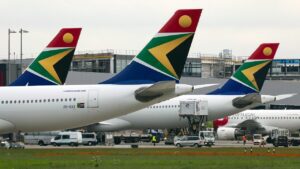From a slow start in 2022 at around 70 percent of pre-pandemic traffic levels, European air traffic steadily climbed through the end of the year to a total of 9.3 million flights, or 83 percent of 2019 levels, said a recently released report from Eurocontrol’s Aviation Intelligence Unit. Eurocontrol expects further strengthening this year, projecting an increase to 92 percent of pre-Covid levels.
The positive performance last year came despite the Russian invasion of Ukraine, which saw the lack of availability of airspace alter traffic flows and significantly affect traffic in Moldova and states adjacent to Russia and Belarus, said the report. The report also projects an uneven recovery across airlines, airports, states, and air navigation service providers, as well as regional flows—all of which varied between 70 percent and 110 percent of 2019 levels on average.
Pent-up demand has returned most airline balance sheets to positive territory for the first time since the pandemic began, even while ticket prices increased, and the energy crisis led to worsening economic conditions across all European countries.
Low-cost carriers, in particular, saw dramatic improvement during 2022, registering traffic totaling 85 percent of pre-pandemic levels during the year, while mainline carriers returned to 75 percent of pre-pandemic levels and regional sectors reached 74 percent of 2019 traffic.
Meanwhile, all-cargo operations and business aviation continued to outpace 2019 levels by 106 percent and 116 percent, respectively.
Delays and punctuality proved worse than in 2019 as the speed of the summer recovery saw staff and capacity shortages across the sector. Arrival and departure punctuality totaled 72 percent and 66 percent, or about 6- to 7 percentage points worse in both cases than in 2019, while peak summer traffic totaled just 40- to 50 percent of pre-Covid levels.
The report also noted that connectivity across the network significantly lags flight levels in virtually every country, highlighting the challenge of returning to pre-pandemic flight levels. Domestic markets in many cases continue to lag the overall recovery averages.
With travel beyond Europe (74 percent of 2019) remaining weaker than intra-European traffic (85 percent of 2019), all of Europe’s major airport hubs apart from Istanbul remained suppressed, totaling between 18 percent and -32 percent below 2019 levels; however, some smaller airports serving mostly European-only destinations ended the year near or above 2019 levels.
On the issue of sustainability, the report notes the pace of change—including more aggressive investment and stronger incentives—needs to accelerate for the industry to reach its carbon reduction targets.
Eurocontrol expects the industry to recover fully in 2025—one year later than it forecast in June 2022, in a ‘base scenario’ prediction that considers weak economic growth, inflationary pressures, and no immediate resolution to the war in Ukraine.
In summary, Eurocontrol said it expects such pressures in 2023 to create the most challenging year of the last decade, adding that summer delays will create an “immense task for all actors,” given airspace issues involving the Ukraine war, extra aircraft in the system, possible industrial action, system changes, and the progressive reopening of Asian markets.
Source: ANonline






